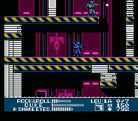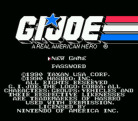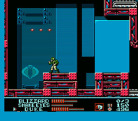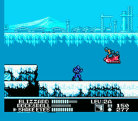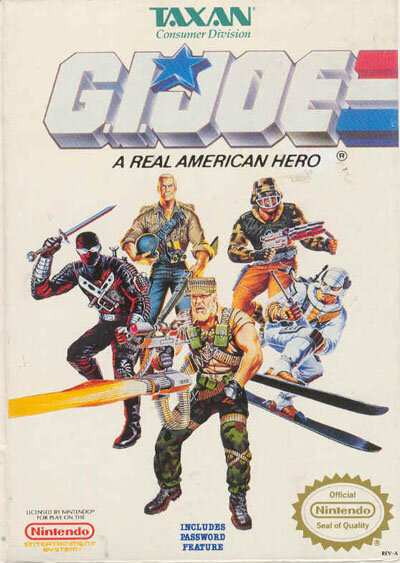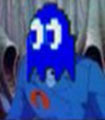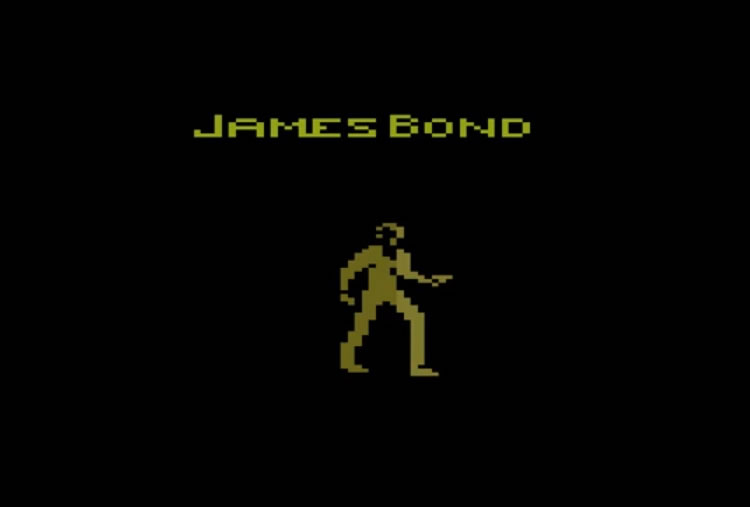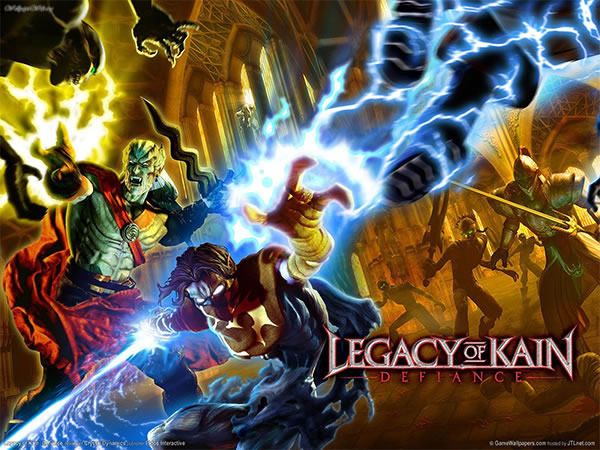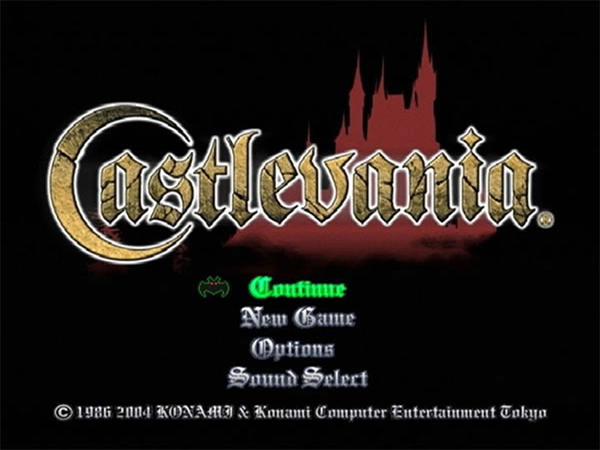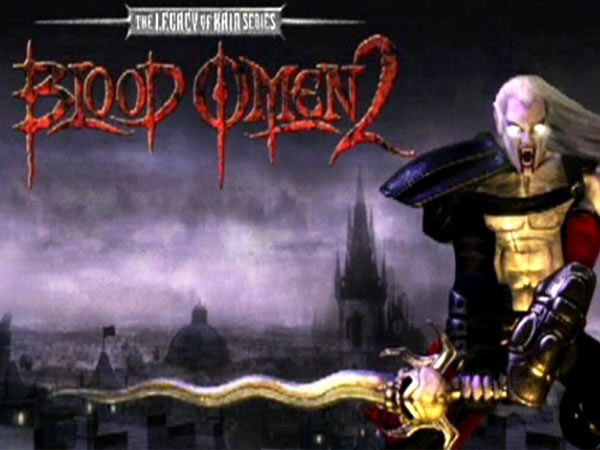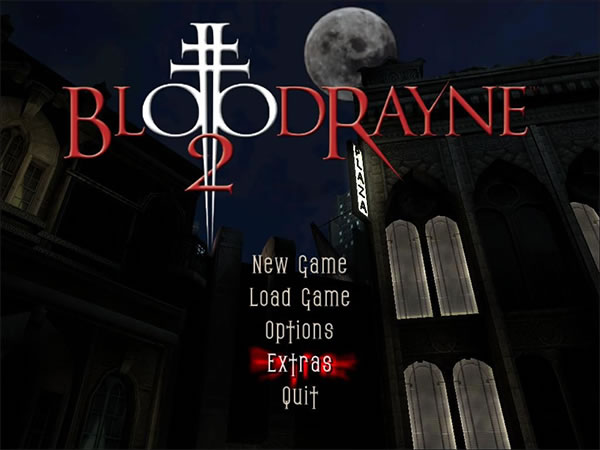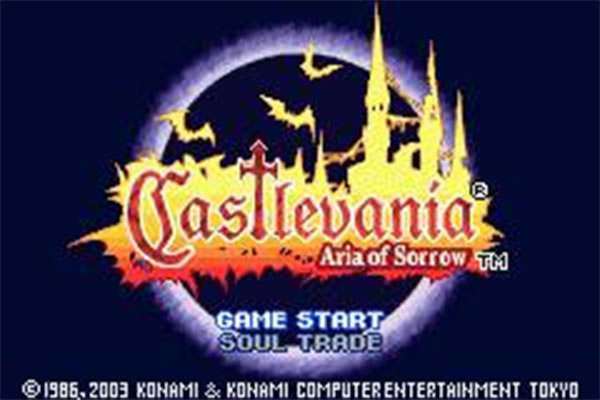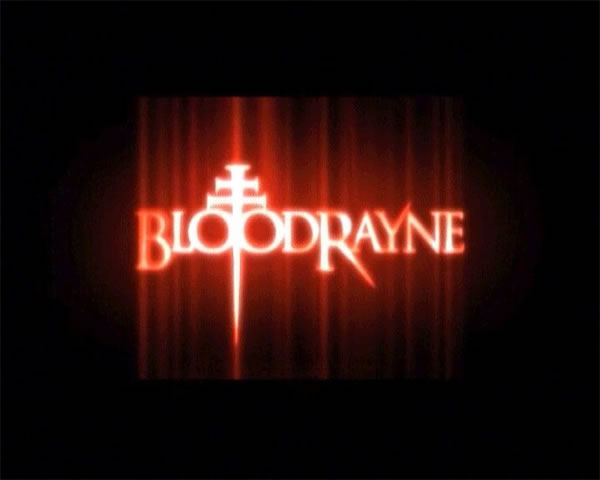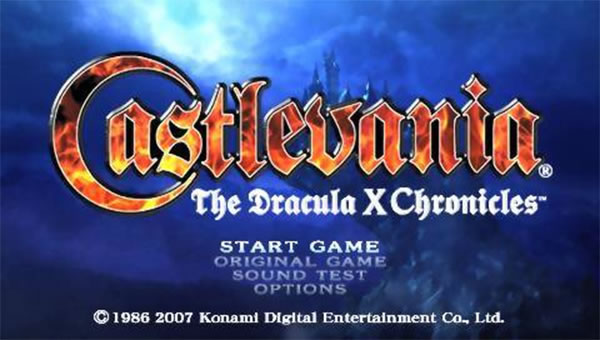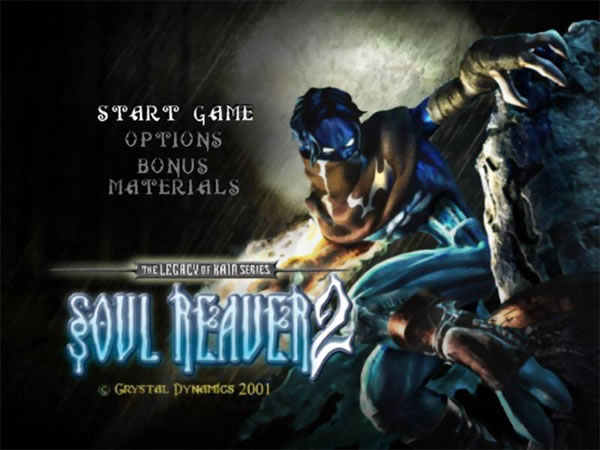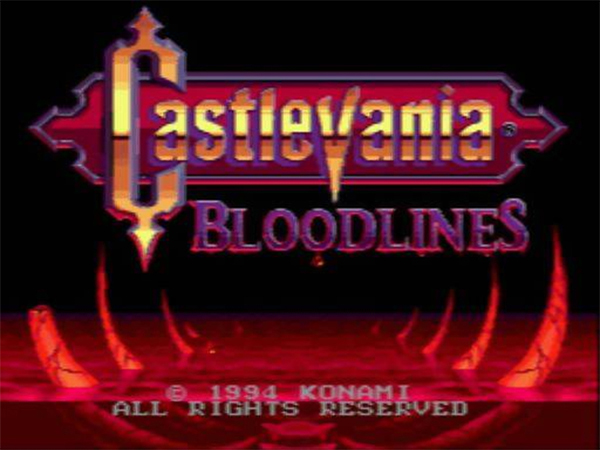- CLASSIC MAGAZINES
- REVIEW CREW
A show recapping what critics thought back
when classic games first came out! - NEXT GENERATION'S BEST & WORST
From the worst 1-star reviews to the best
5-stars can offer, this is Next Generation! - NINTENDO POWER (ARCHIVE)
Experience a variety of shows looking at the
often baffling history of Nintendo Power! - MAGAZINE RETROSPECTIVE
We're looking at the absolutely true history of
some of the most iconic game magazines ever! - SUPER PLAY'S TOP 600
The longest and most ambitious Super NES
countdown on the internet! - THEY SAID WHAT?
Debunking predictions and gossip found
in classic video game magazines! - NEXT GENERATION UNCOVERED
Cyril is back in this spin-off series, featuring the
cover critic review the art of Next Generation! - HARDCORE GAMER MAGAZING (PDF ISSUES)
Download all 36 issues of Hardcore Gamer
Magazine and relive the fun in PDF form!
- REVIEW CREW
- ELECTRONIC GAMING MONTHLY
- ELECTRONIC GAMING MONTHLY RANKS
From Mario to Sonic to Street Fighter, EGM
ranks classic game franchises and consoles! - ELECTRONIC GAMING MONTHLY BEST & WORST
Counting down EGM’s best and worst reviews
going year by year, from 1989 – 2009! - ELECTRONIC GAMING BEST & WORST AWARDS
11-part video series chronicling the ups and
downs of EGM’s Best & Worst Awards!
- ELECTRONIC GAMING MONTHLY RANKS
- GAME HISTORY
- GAME OVER: STORY BREAKDOWNS
Long-running series breaking down game
stories and analyzing their endings! - A BRIEF HISTORY OF GAMING w/ [NAME HERE]
Real history presented in a fun and pithy
format from a variety of game historians! - THE BLACK SHEEP
A series looking back at the black sheep
entries in popular game franchises! - INSTANT EXPERT
Everything you could possibly want to know
about a wide variety of gaming topics! - FREEZE FRAME
When something familiar happens in the games
industry, we're there to take a picture! - I'VE GOT YOUR NUMBER
Learn real video game history through a series
of number-themed episodes, starting at zero! - GREAT MOMENTS IN BAD ACTING
A joyous celebration of some of gaming's
absolute worst voice acting!
- GAME OVER: STORY BREAKDOWNS
- POPULAR SHOWS
- DG NEWS w/ LORNE RISELEY
Newsman Lorne Riseley hosts a regular
series looking at the hottest gaming news! - REVIEW REWIND
Cyril replays a game he reviewed 10+ years
ago to see if he got it right or wrong! - ON-RUNNING FEUDS
Defunct Games' longest-running show, with
editorials, observations and other fun oddities! - DEFUNCT GAMES QUIZ (ARCHIVE)
From online quizzes to game shows, we're
putting your video game knowledge to the test!- QUIZ: ONLINE PASS
Take a weekly quiz to see how well you know
the news and current gaming events! - QUIZ: KNOW THE GAME
One-on-one quiz show where contestants
find out if they actually know classic games! - QUIZ: THE LEADERBOARD
Can you guess the game based on the classic
review? Find out with The Leaderboard!
- QUIZ: ONLINE PASS
- DEFUNCT GAMES VS.
Cyril and the Defunct Games staff isn't afraid
to choose their favorite games and more! - CYRIL READS WORLDS OF POWER
Defunct Games recreates classic game
novelizations through the audio book format!
- DG NEWS w/ LORNE RISELEY
- COMEDY
- GAME EXPECTANCY
How long will your favorite hero live? We crunch
the numbers in this series about dying! - VIDEO GAME ADVICE
Famous game characters answer real personal
advice questions with a humorous slant! - FAKE GAMES: GUERILLA SCRAPBOOK
A long-running series about fake games and
the people who love them (covers included)! - WORST GAME EVER
A contest that attempts to create the worst
video game ever made, complete with covers! - LEVEL 1 STORIES
Literature based on the first stages of some
of your favorite classic video games! - THE COVER CRITIC
One of Defunct Games' earliest shows, Cover
Critic digs up some of the worst box art ever! - COMMERCIAL BREAK
Take a trip through some of the best and
worst video game advertisements of all time! - COMIC BOOK MODS
You've never seen comics like this before.
A curious mix of rewritten video game comics!
- GAME EXPECTANCY
- SERIES ARCHIVE
- NINTENDO SWITCH ONLINE ARCHIVE
A regularly-updated list of every Nintendo
Switch Online release, plus links to review! - PLAYSTATION PLUS CLASSIC ARCHIVE
A comprehensive list of every PlayStation
Plus classic release, including links! - RETRO-BIT PUBLISHING ARCHIVE
A regularly-updated list of every Retro-Bit
game released! - REVIEW MARATHONS w/ ADAM WALLACE
Join critic Adam Wallace as he takes us on a
classic review marathon with different themes!- DEFUNCT GAMES GOLF CLUB
Adam Wallace takes to the links to slice his way
through 72 classic golf game reviews! - 007 IN PIXELS
Adam Wallace takes on the world's greatest spy
as he reviews 15 weeks of James Bond games! - A SALUTE TO VAMPIRES
Adam Wallace is sinking his teeth into a series
covering Castlevania, BloodRayne and more! - CAPCOM'S CURSE
Adam Wallace is celebrating 13 days of Halloween
with a line-up of Capcom's scariest games! - THE FALL OF SUPERMAN
Adam Wallace is a man of steel for playing
some of the absolute worst Superman games! - THE 31 GAMES OF HALLOWEEN
Adam Wallace spends every day of October afraid
as he reviews some of the scariest games ever! - 12 WEEKS OF STAR TREK
Adam Wallace boldly goes where no critic has
gone before in this Star Trek marathon!
- DEFUNCT GAMES GOLF CLUB
- DAYS OF CHRISTMAS (ARCHIVE)
Annual holiday series with themed-episodes
that date all the way back to 2001!- 2015: 30 Ridiculous Retro Rumors
- 2014: 29 Magazines of Christmas
- 2013: 29 Questionable Power-Ups of Christmas
- 2012: 34 Theme Songs of Christmas
- 2011: 32 Game Endings of Christmas
- 2010: 31 Bonus Levels of Christmas
- 2009: 30 Genres of Christmas
- 2008: 29 Controls of Christmas
- 2007: 34 Cliches of Christmas
- 2006: 33 Consoles of Christmas
- 2005: 32 Articles of Christmas
- 2004: 31 Websites of Christmas
- 2003: 29 Issues of Christmas
- 2002: 28 Years of Christmas
- 2001: 33 Days of Christmas
- NINTENDO SWITCH ONLINE ARCHIVE
- REVIEW ARCHIVE
- FULL ARCHIVE
G.I. Joe
Larry Hama, creator of G.I. Joe: A Real American Hero, often felt hamstrung by the products that Hasbro put on his desk. What began as a strictly military toy line slowly grew into a hodgepodge of eccentric characters that started to resemble participants in a Mardi Gras festival. Somehow, Hama not only made these characters work, but his strong writing made some of them memorable and iconic for the youth of the 1980s. The team at Taxan, must have felt a similar creative constriction when they were given the license for G.I.Joe, knowing that they were to use characters and vehicles available for retail in 1990. In other words, they could not depend primarily on highly recognizable characters from the successful cartoon series of the mid-eighties. Luckily, they did manage to stick an image of Duke, the first sergeant of the Joe team, on the box, but he is really the only character that casual viewers of the show may recognize at first glance.
As a game, G.I.Joe could have easily become a shallow, pixilated commercial for toys, but Taxan managed to not only showcase the vast majority of the 1989 and 1990 products, but they did so in one heck of an action platformer.
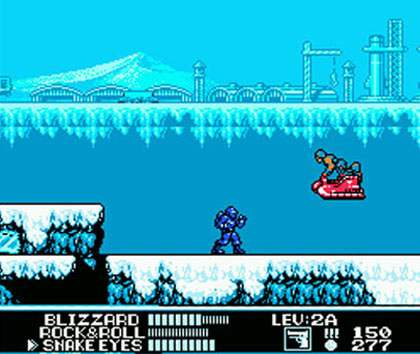
The story is very general, but war games need not have deeply complex objectives to be enjoyable. Destroying things and killing enemies seems to suffice as story enough. Joe leader, General Hawk, decides it is time to go on the offensive against the evil terrorist organization known as Cobra. Hawk squawks his commands from a static-ridden video feed from an undisclosed location, and he orders you to such exotic locations as the Amazon and the Antarctic to find enemy bases to obliterate. On the last mission, the leader accompanies your outfit, and it is nice to see that he is not merely an armchair general, but rather a gritty, jet-backpacked brother-in-arms. The only surprise in the story is that G.I.Joe takes the initiative and aggressively hunts down Cobra honchos. If you recall the cartoon series (one largely tamed by parent groups), the Joes were often reactionary task force, waiting for Cobra to do something awful before getting into gear.
Prior to each mission, Hawk assigns a team leader, but players then choose two additional accompanying soldiers that could be toggled during gameplay, each with his individual strengths and weaknesses. Snake-Eyes, for example, has excellent height in his jump, but his stamina is lower than the other characters; Rock & Roll, carries heavy firepower, but the weight of his ammo limits his movement; and so on. Each troop has his own stamina meter, and one's success per mission depends on how well a player divvies out responsibilities among the team. As an added bonus, characters can sometimes co-opt Cobra vehicles for their own use, saving one ammunition, health, and time.
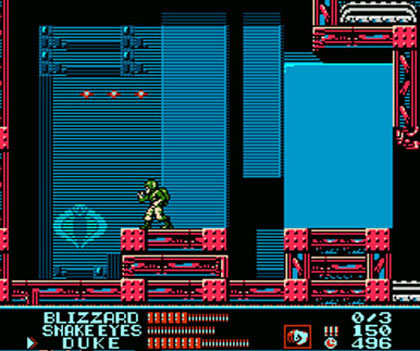
The Taxan team deserves much praise for their handling of the well-established G.I.Joe license. Led by Kenneth Lobb (the man own helped make the N64 worth owning with game like GoldenEye and Perfect Dark), the developers carefully examined and took note of the characters available to them and fit them nicely to their purposes. Each Cobra troop does what he's supposed to do: Frag Vipers throw grenades, Rock Vipers repel from rocks, and Night Vipers sneak up on you with little warning. While these details will go unnoticed by most players, it gives any devotee of the G.I.Joe franchise a sense of satisfaction that grown men at a software company treated their subject with respect and professionalism.
To date, there have been six G.I.Joe video games made by six different companies, and it took a little-known software developer to make the best of the lot. Even if you have never owned a Joe or you think that the Terrordrome is an album by the rap pioneers Public Enemy, you are still likely to enjoy this game.
As a game, G.I.Joe could have easily become a shallow, pixilated commercial for toys, but Taxan managed to not only showcase the vast majority of the 1989 and 1990 products, but they did so in one heck of an action platformer.

The story is very general, but war games need not have deeply complex objectives to be enjoyable. Destroying things and killing enemies seems to suffice as story enough. Joe leader, General Hawk, decides it is time to go on the offensive against the evil terrorist organization known as Cobra. Hawk squawks his commands from a static-ridden video feed from an undisclosed location, and he orders you to such exotic locations as the Amazon and the Antarctic to find enemy bases to obliterate. On the last mission, the leader accompanies your outfit, and it is nice to see that he is not merely an armchair general, but rather a gritty, jet-backpacked brother-in-arms. The only surprise in the story is that G.I.Joe takes the initiative and aggressively hunts down Cobra honchos. If you recall the cartoon series (one largely tamed by parent groups), the Joes were often reactionary task force, waiting for Cobra to do something awful before getting into gear.
Prior to each mission, Hawk assigns a team leader, but players then choose two additional accompanying soldiers that could be toggled during gameplay, each with his individual strengths and weaknesses. Snake-Eyes, for example, has excellent height in his jump, but his stamina is lower than the other characters; Rock & Roll, carries heavy firepower, but the weight of his ammo limits his movement; and so on. Each troop has his own stamina meter, and one's success per mission depends on how well a player divvies out responsibilities among the team. As an added bonus, characters can sometimes co-opt Cobra vehicles for their own use, saving one ammunition, health, and time.

The Taxan team deserves much praise for their handling of the well-established G.I.Joe license. Led by Kenneth Lobb (the man own helped make the N64 worth owning with game like GoldenEye and Perfect Dark), the developers carefully examined and took note of the characters available to them and fit them nicely to their purposes. Each Cobra troop does what he's supposed to do: Frag Vipers throw grenades, Rock Vipers repel from rocks, and Night Vipers sneak up on you with little warning. While these details will go unnoticed by most players, it gives any devotee of the G.I.Joe franchise a sense of satisfaction that grown men at a software company treated their subject with respect and professionalism.
To date, there have been six G.I.Joe video games made by six different companies, and it took a little-known software developer to make the best of the lot. Even if you have never owned a Joe or you think that the Terrordrome is an album by the rap pioneers Public Enemy, you are still likely to enjoy this game.
HOME |
CONTACT |
NOW HIRING |
WHAT IS DEFUNCT GAMES? |
NINTENDO SWITCH ONLINE |
RETRO-BIT PUBLISHING
Retro-Bit |
Switch Planet |
The Halcyon Show |
Same Name, Different Game |
Dragnix |
Press the Buttons
Game Zone Online | Hardcore Gamer | The Dreamcast Junkyard | Video Game Blogger
Dr Strife | Games For Lunch | Mondo Cool Cast | Boxed Pixels | Sega CD Universe | Gaming Trend
Game Zone Online | Hardcore Gamer | The Dreamcast Junkyard | Video Game Blogger
Dr Strife | Games For Lunch | Mondo Cool Cast | Boxed Pixels | Sega CD Universe | Gaming Trend
Copyright © 2001-2025 Defunct Games
All rights reserved. All trademarks are properties of their respective owners.
All rights reserved. All trademarks are properties of their respective owners.






